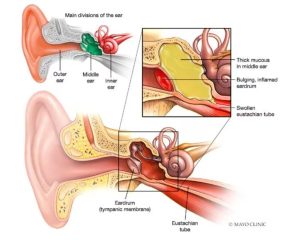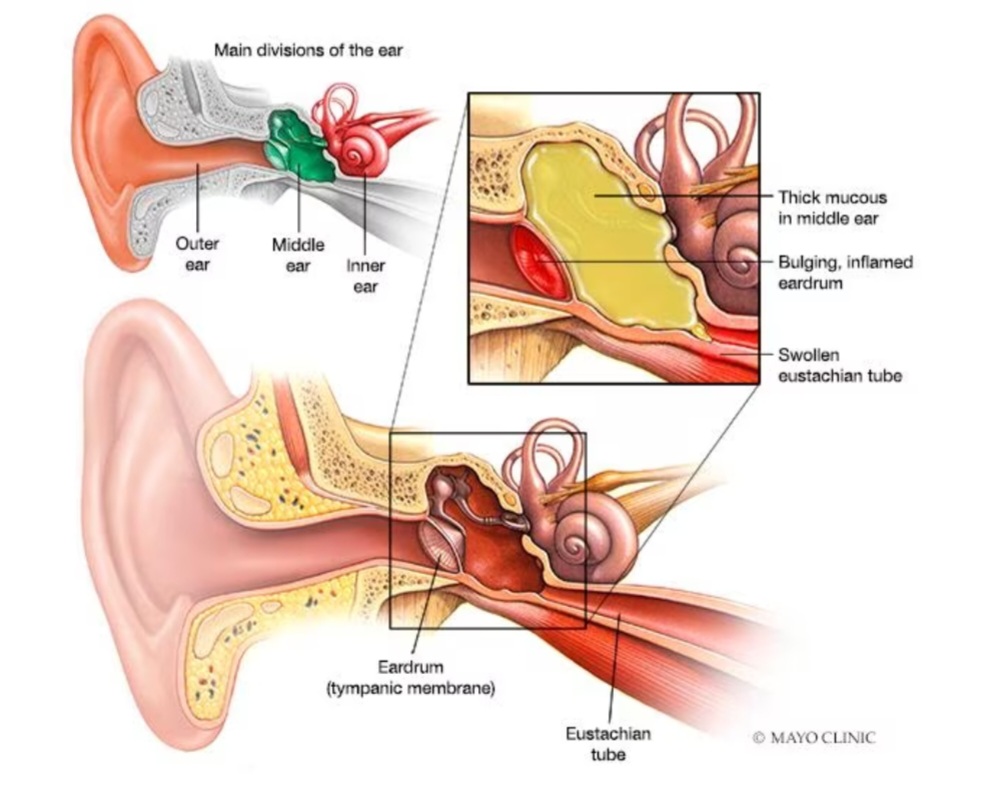Ear infection (middle ear)
Overview
An ear infection (sometimes called acute otitis media) is an infection of the middle ear, the air-filled space behind the eardrum that contains the tiny vibrating bones of the ear. Children are more likely than adults to get ear infections.

Ear infection
In an ear infection, narrow tubes that run from the middle ear to high in the back of the throat (eustachian tubes) can become swollen and blocked. This can lead to mucus build-up in the middle ear. This mucus can become infected and cause ear infection symptoms.
Because ear infections often clear up on their own, treatment may begin with managing pain and monitoring the problem. Sometimes, antibiotics are used to clear the infection. Some people are prone to having multiple ear infections. This can cause hearing problems and other serious complications.
Symptoms
The onset of signs and symptoms of ear infection is usually rapid.
Children
Signs and symptoms common in children include:
Ear pain, especially when lying down
Tugging or pulling at an ear
Trouble sleeping
Crying more than usual
Fussiness
Trouble hearing or responding to sounds
Loss of balance
Fever of 100 F (38 C) or higher
Drainage of fluid from the ear
Headache
Loss of appetite
Adults
Common signs and symptoms in adults include:
Ear pain
Drainage of fluid from the ear
Trouble hearing
When to see a doctor
Signs and symptoms of an ear infection can indicate several conditions. It’s important to get an accurate diagnosis and prompt treatment. Call your child’s doctor if:
Symptoms last for more than a day
Symptoms are present in a child less than 6 months of age
Ear pain is severe
Your infant or toddler is sleepless or irritable after a cold or other upper respiratory infection
You observe a discharge of fluid, pus or bloody fluid from the ear.






